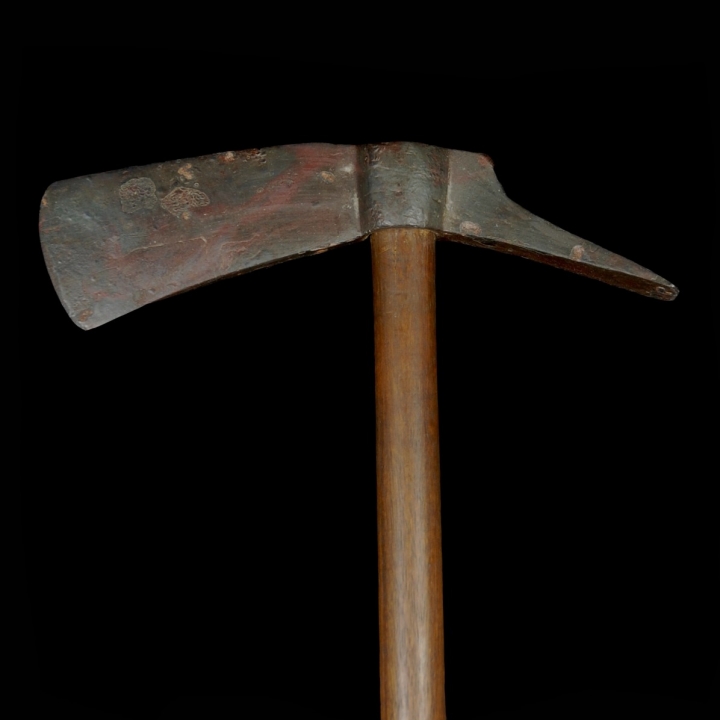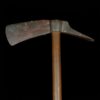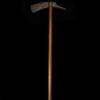Roman Dolabra
Culture: Roman
Period: 2nd-3rd century A.D.
Material: Iron, wood
Dimensions: 53 cm high; 19.7 cm long (blade)
Price: Sold
Ref: 3383
Provenance: Collection Dr. Morkramer acquired in the 1960s to 1970s. Thence Antikenkabinett Gackstätter with the list number 4368. On 11 April 2012 acquired by Claus-Eberhard Schultze, Berlin, Germany. Since then in the collection. Accompanied by an original expertise of the Antikenkabinett Frankfurt signed by Bernd Gackstätter.
Condition: Intact, wood handle modern.
Description: Dolabra or pick-axe which belonged to the Roman legionary's equipment. The massive iron cast digging tool has a slightly set off round shaft hole for mounting on the wood handle. The dolabra has typically two edges, on one side a softly downwards tapering axe, on the other side a sharp hoe. It was used respectively for working with wood, as well as for earthworks and to tear down walls. Dolabras are referenced in ancient literature several times, and also depicted on the reliefs of the Trajan's Column. They were found in military camps, as well as on battle fields. This dolabra originates from a find in Rhineland.





